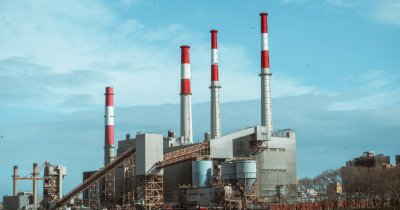How do wind turbines work
Wind turbines use the power of wind to generate electricity and the system is quite simple.
Wind turns the turbine's blades, moving the rotor within the turbine that in turn spins the generator which creates energy.
The amount of energy that wind turbines can generate depends on each country and its wind capacity.
But when it comes to the capacity of the turbines themselves, most wind turbines have the capacity to produce 2-3 megawatts, which means that per year they can produce as much as 6 million kilowatts of energy.
This amount of energy should be enough for about 1.500 households.
Generally speaking, the faster the wind is blowing, the more electricity is being produced, but that is up to a certain level, because if the wind is too strong, the turbines will shut themselves off completely in order to prevent potential damage.
Wind farms are mostly installed either on hilltops with a lot of free space available or in coastal locations.
Advantages and disadvantages of wind turbines
The biggest advantage wind turbines have over something like gas or coal powered stations is the fact that they are a green and clean source of energy.
This means that when they operate, they don't produce CO2, hence don't contribute to global warming.
Another advantage is the fact that the average lifespan of a wind turbine is 20 to 25 years and theoretically, during this time frame only minimal maintenance should be required.
Wind turbines are also very easy and quick to build, compared to even other green energy alternatives, like solar panels.
The drawbacks come when we look at the amount of power wind turbines can produce, when compared to nuclear-based power plants.
In fact, one average nuclear power plant is able to produce as much power as 1.000 2MW wind turbines.
What's more is the fact that wind energy is also inconsistent and can't be produced everywhere on Earth, since it varies greatly from one zone to the other.
By contrast, nuclear power plants run at virtually the same capacity for an indefinite amount of time.
An average offshore wind turbine farm, which is the most efficient way of harvesting wind power, can achieve about half of the electricity produced by a nuclear power plant, and that is on ideal conditions.

Countries with most wind power
When talking about countries with most wind power, we can refer to either countries with the most installed wind plants or countries where wind turbines are most efficient.
If we are talking about the first one, then among the leading countries with regards to total installed wind energy are the US, China and India.
However, when we look at the amount of electricity produced by wind turbine farms, we find out that Denmark, Sweden, Ireland and Germany are the leaders when it comes to wind energy production.
The data provided by the International Renewable Energy Agency shows that Denmark produces about 1075 watts per capita of wind energy, followed by Sweden with 941, Ireland with 878 and Germany with 747 watts per person.
Romania makes the cut for the top 20 countries in the world for wind energy production in 2021, but barely, as it sat at spot 19, with 175 W per capita.
Wind turbines at home
Depending on where you live, you might make enough electricity from a wind turbine in order to meet your monthly needs for electricity.
The price of wind turbines under 100 kilowatts ranges from 3.000 to 8.000 per kilowatt of capacity.
This means that a 10 kW wind turbine, which should be enough for a large home, might have an installation cost of 50.000 to 80.000 dollars.
Commercial wind turbines, on the other hand, the ones installed in so-called farms, are more expensive, since there are more of them and the total cost for an average wind turbine farm is between 1.3 million to 2.2 million dollars per MW of installed capacity.
Since most commercial wind turbines have a capacity of 2 MW, the installation cost for those ranges from 3 to 4 million dollars.
Wind turbines Romania
Wind energy is the second most important electricity producer in Romania, which is among the countries with the highest wind energy potential in Eastern-Europe.
In January 2022, statistics showed that hydro power plants are still the highest producer of electricity in Romania, with 2.270 MW, which is nearly 26% of the amount of energy produced in the country.
Wind energy is a close second, however, with 2.096 MW produced, the equivalent to three nuclear reactors from Cernavodă.
So there is a lot of potential to expand on green and clean wind energy in Romania, and if more onshore and offshore wind turbines are installed, they will be able to produce more electricity than hydro power plants in ideal conditions.
Wind energy is one of the best sources of electricity production that we currently have, as the maintenance of the turbines is relatively low compared to the other options and the potential energy that we can harvest is very high in some areas.
While wind is definitely a variable when it comes to the production of electric energy, it is one of the resources that will never deplete.
 Mihai - Cristian Ioniță
Mihai - Cristian Ioniță












Any thoughts?